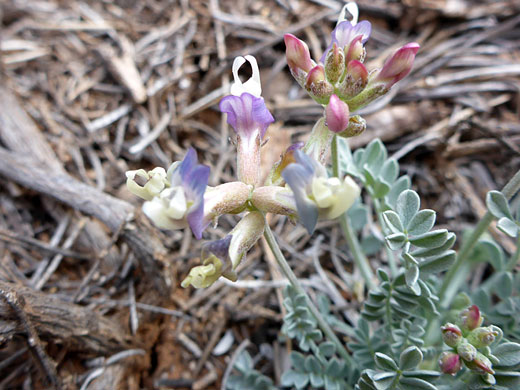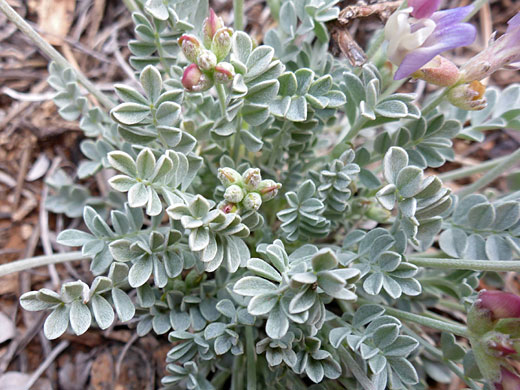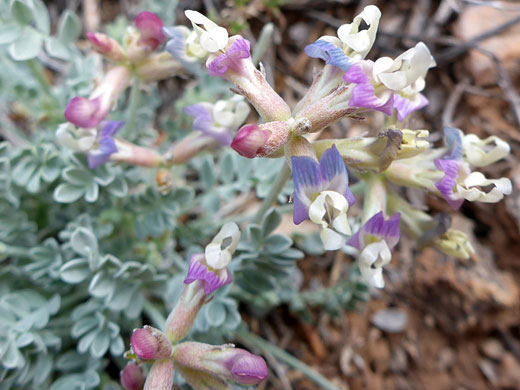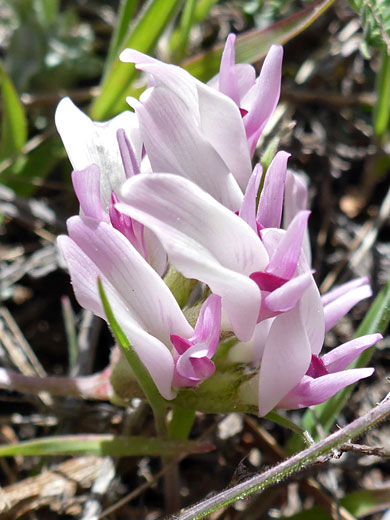Common name:
Torrey's milkvetch
Family:
Scientific name:
Astragalus calycosus
Main flower color:
Range:
The Great Basin and neighboring states, eastwards to southwest Colorado and west New Mexico
Height:
Up to 6 inches
Habitat:
Rocky hillsides and flats, pinyon-juniper woodland; 3,000 to 8,000 feet
Leaves:
Up to 3 inches long; compound, divided into 1 to 7 ovate to elliptic leaflets
Season:
April to July
Astragalus calycosus can produce extensive colonies, containing dozens of plants growing close together. Plants are essentially stemless; they have short leaf stalks, staying close to the ground, and multiple, ascending flower stalks rising well above the leaves, angled in all directions. Leaflets are greyish green in color, with obtuse or pointed tips, and they are rather fewer in number than many other astragalus species. Leaflets have a covering of branched, silvery hairs.
Flower clusters typically contain between 1 and 8 heads. The banner petal is usually bright pink-purple, becoming blue as it withers, while the two wing petals are mostly white - an identifying characteristic of this species. Wing petal tips are deeply notched or lobed. The calyx teeth are relatively long and slender. Fruits are ascending, strigose hairy, approximately three-sided in cross-section, up to one inch long and around 0.15 inches wide. There are three varieties of astragalus calycosus (calycosus, monophyllidius, scaposus).
Flower clusters typically contain between 1 and 8 heads. The banner petal is usually bright pink-purple, becoming blue as it withers, while the two wing petals are mostly white - an identifying characteristic of this species. Wing petal tips are deeply notched or lobed. The calyx teeth are relatively long and slender. Fruits are ascending, strigose hairy, approximately three-sided in cross-section, up to one inch long and around 0.15 inches wide. There are three varieties of astragalus calycosus (calycosus, monophyllidius, scaposus).
All Contents © Copyright The American Southwest | Comments and Questions | Contribute | Site Map









